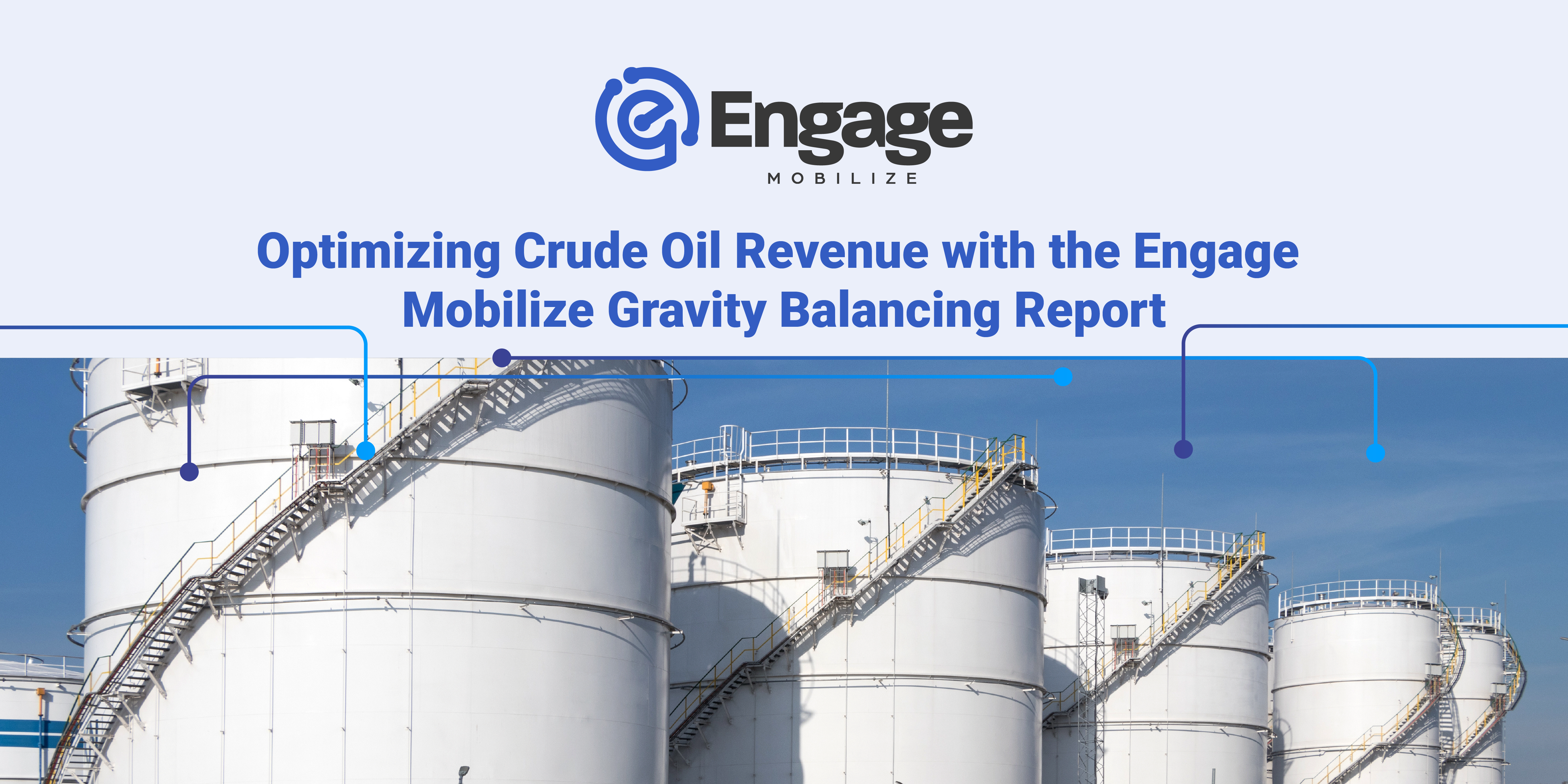
Rising costs of production and supply chain disruptions are leaving those in the energy and fuel industries scrambling for ways to conserve and protect their assets. The situation also strains budgets, delaying replacement and upgrades for critical infrastructure. This makes streamlining maintenance more essential than ever.
Vendors and other stakeholders along the supply chain are feeling the pinch as well.
By investing in automation to manage assets and streamline the maintenance process, you’ll be able to create long-term financial strategies while reducing the cost of production and service delivery. Two of the best technologies are enterprise asset management systems (EAM) and computerized maintenance management software (CMMS).
An EAM provides a more comprehensive, long-term approach to asset management by allowing you to monitor and track all assets enterprise-wide and identify where they are in their life cycle. This allows companies to determine the profitability of each asset and plan for changes that will affect production.
This will:
- Save time and money
- Eliminate waste
- Streamline productivity
Maintenance management applications are a subset of asset management platforms that optimize and oversee routine maintenance tasks. The core concerns of these systems are to:
- Identify potential problems with equipment
- Automate maintenance scheduling
- Track inventory
- Manage workflows
- Maintain asset information databases
EAM or CMMS: Which Does Your Company Need Most?
The short answer is that your company needs both, To understand why it’s important to dive deeper into their main functions and focus.
The foundation for protecting the financial viability of an enterprise over time lies in strategy and planning. This is where an EAM plays a more robust, comprehensive role in asset management. With such a system, stakeholders will know at a glance where all assets are located, where they are in their life cycle, and how each adds value or contributes to enterprise functionality and profit.
This allows companies to plan budgets, schedule events, and make long-term decisions. Their focus is on tracking functional, existing assets while planning future acquisitions.
These platforms are essential for larger facilities because they’re fully functional over multiple departments and geo-locations. This is also a more viable solution for companies with diverse maintenance requirements, such as separate departments for IT, production, and supply chain operations.
CMMS systems provide a more granular, location-specific approach to asset maintenance. They’re usually implemented at a specific production facility, but they have limited multi-site support. They’re concerned with maintaining assets that are already in place and operational. This extends the useful life of these assets, delaying the need for costly repairs and replacement. This, in turn, controls costs and limits business disruption.
While many EAMs have CMMS functionality, adding a maintenance management application to your set of tech tools offers additional support in more narrowly defined areas. It helps protect those assets on a daily basis and reduces long-term costs. On the other hand, a CMMS lacks many of an asset management system’s capabilities. While it contributes to long-range financial stability, its applications and value are in the present.
Another distinction between the two is accessibility and application in the field. Although all levels of an enterprise have access to CMMS systems, they are mainly used in the field by technicians, operations managers, and maintenance workers. The typical EAM user is usually C-suite executives, financial planners, and various departments that are concerned with accounting, acquisitions, and compliance.
How a CMMS Reduces Costs in Energy Sectors
Digitalizing operations throughout your enterprise allows you to create a modern, progressive, and efficient operation. Using automated asset management systems leverages technology to improve efficiency and manage your assets throughout their lifecycle. It’s focused on collecting and analyzing real-time data regarding asset conditions and performance.
When it comes to daily cost controls and operations, a CMMS takes a more targeted, short-term approach. Its key function is work order formation and preventative maintenance. Where asset management monitors the lifecycle of an asset, a CMMS extends and optimizes that lifecycle through asset upkeep. It keeps production flowing by preventing breakdowns and other potential business disruptions.
More specifically, incorporating a CMMS into your automation toolset will control operating costs by:
Reducing maintenance backlogs. The cost of maintenance backlogs in the oil & gas industry alone is in the billions. By using CMMS apps to monitor equipment and identify potential problems before they become costly repairs, you’re better able to balance maintenance resources and prioritize events.
Streamlining maintenance scheduling. By analyzing operational performance, CMMS software can automate service scheduling and detect problems earlier in the asset lifecycle. This prevents unnecessary breakdowns and limits disruptions.
Extending the asset lifecycle. With regular preventive maintenance, production equipment remains in good working order and delays the need to replace it until later in its useful life. Even in remote locations, sensors can monitor performance in real-time, detect failures earlier, troubleshoot problems, and automatically dispatch a work order by priority.
Reducing environmental impact. Malfunctioning or inefficient equipment consumes more energy and produces more waste. These machines break down more frequently and require more resources to operate. By digitizing maintenance oversight and scheduling, you’ll:
- Optimize facilities
- Eliminate paperwork orders and invoicing
- Prioritize resource allocation
- Conserve energy
- Reduce environmental risk
- Avoid fines
Determining the Automation Needs of Your Company
Current technology and connectivity make the average CMMS more functional over multiple locations. This may eliminate the need for enterprises with fewer assets or smaller budgets to acquire an EAM without sacrificing functionality. Larger corporations with more assets and locations spread out over a range of sites and facilities will need the extended oversight and functionality of an EAM.
Start by analyzing the automation opportunities for your company and how they integrate with long-term goals.
Identify processes and define goals. Identify and define all processes necessary for operations. Where do you stand in terms of data collection needs, digital transformation, and usage? In what areas can automation streamline and improve these processes? How can each technology help you define and meet long-term and short-term goals?
Observe processes in action. It’s one thing to identify trends and analyze numbers. Seeing processes in action provides more practical information on performance and efficiency. In what ways can automation eliminate unnecessary steps or otherwise increase efficiency and eliminate waste?Ask managers, technicians, and staff for their input. Are there processes that they wish performed different or better? Are there pain points or areas of inefficiency that are unaddressed? In what ways would technology alleviate these problems?
Determine/define automation criteria. Cases for automation are determined by certain sets of criteria, and these can vary by department or function. For example, the digital needs for executives in the head office will be different than those of workers in refineries and other production facilities.Consider:
- Time: How repetitive is the process, and how much of your employees’ time is diverted that could be more productively spent on other activities?
- Continuity: Is your production environment unstable or highly volatile, requiring frequent human oversight, input, or intervention? If so, automation may not be the best solution for some aspects.
However, if your operations run on repetitive tasks and processes that remain largely unchanged over time, automated platforms improve efficiency while providing all of the other benefits already mentioned.
Complexity: In addition to the complexity of installing automation and onboarding your staff, the complexity of the processes themselves must be considered. This is where employee input and practical observation come into play.
Through visual evaluation and feedback, consider whether processes involve too many unnecessary steps and levels that could be integrated and streamlined through automation. Would the complexity of the process prolong implementing technology or make digital migration more costly and complicated than the ROI warrants?
Keep in mind that the possible cost of compliance violations or slack safety standards could warrant automation regardless of the cost of implementation.
Safety and risk management: Speaking of safety, automation should be considered in cases where it will improve workplace safety and ensure regulatory compliance. For example, upgrading equipment to comply with new government environmental standards.
Employee involvement, retraining, volume, and complexity of automation implementation/operation also play key roles in choosing automated solutions.
Final Thoughts
Selecting the right automation technologies and platforms is especially essential for enterprises in the oil & gas, energy, and renewables industries. The rising cost of doing business is cutting into profitability, which leads to delays in upgrading or replacing outdated, inefficient infrastructure.
You needn’t skimp in order to cut costs.
Automated solutions for everything from issuing filed tickets to managing day-to-day transactions are available from Engage Mobilize. Contact us to arrange a consultation and start streamlining your enterprise today.
Are you ready to learn more?
We’re ready to talk to you about the specific cost savings, workflow efficiencies and data insights that come from taking your field operations digital.
Share this
Similar Stories

Best Practices for Field Ticketing in Oil & Gas

Optimizing Crude Oil Revenue with the Engage Mobilize Gravity Balancing Report
